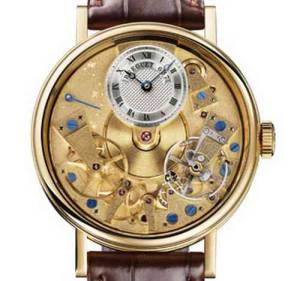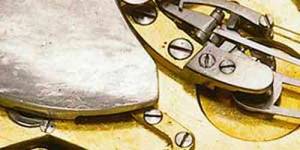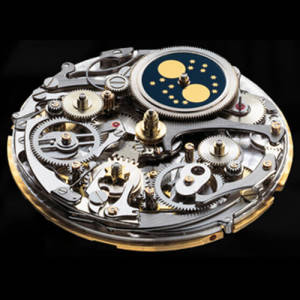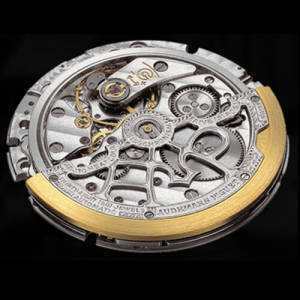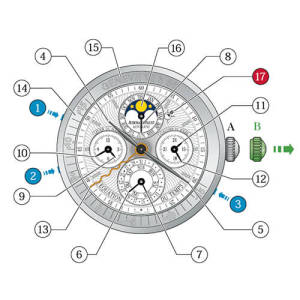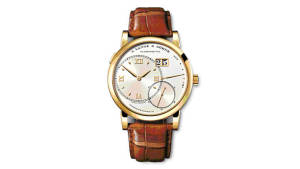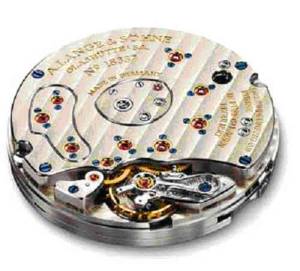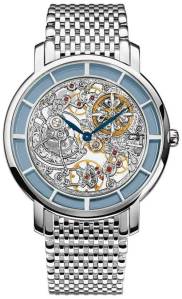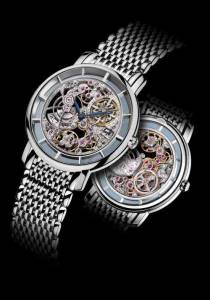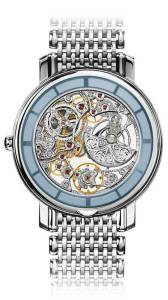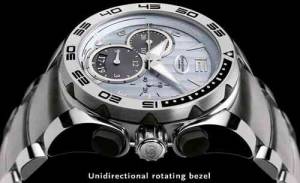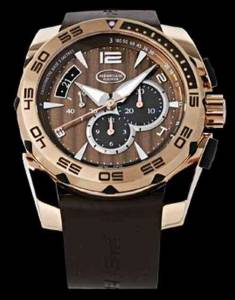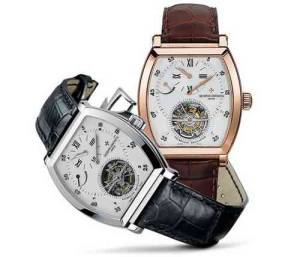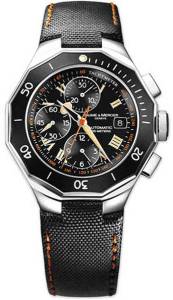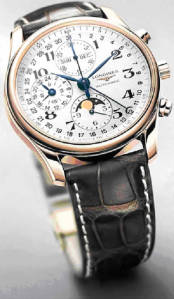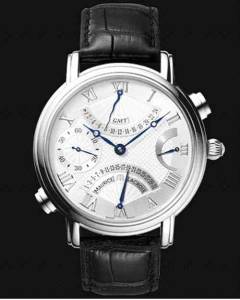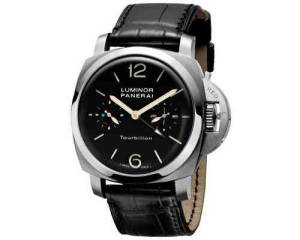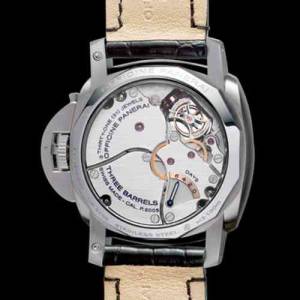Breguet – Watch : La Tradition Breguet
One of the most famous Breguet inventions is the pare-chute. When a watch falls or receives a blow, it is the balance between pivots that are the most likely to suffer, because of their slenderness. As early as 1790, Breguet made them shorter and gave them a conical shape. They are held in place by a small coupelle of a suitable shape, which is mounted on a spring blade. When the watch receives a blow, the pivot, rather than breaking, is dislodged and them returns automatically to its correct position, sliding on the sides of the coupelle. Also called the “elastic” balances suspension, Breguet’s para-chute is the ancestor of the modern Incabloc and all other shock-protection devices.
A. L. Breguet was the first to discover, through his oscillating platinum-weight watch, a formula which would produce a reliable automatic watch. Breguet sold one of his first self-winding watches to Queen Marie-Antoinette.
Inspired by a souscription watch, “La Tradition Breguet” salutes one of Breguet’s most important inventions, the pare-chute. Hand would mechanical movement, caliber 507DR, with straight-line lever escapement, monometallic balance and Breguet overcoil.
A. L. Breguet was the first to discover, through his oscillating platinum-weight watch, a formula which would produce a reliable automatic watch. Breguet sold one of his first self-winding watches to Queen Marie-Antoinette.
Inspired by a souscription watch, “La Tradition Breguet” salutes one of Breguet’s most important inventions, the pare-chute. Hand would mechanical movement, caliber 507DR, with straight-line lever escapement, monometallic balance and Breguet overcoil.
Ref. 7037BA/11/9V6
Metal: yellow gold / white gold
Calibre: 505SR
Lines: 14 ½
Caseback: sapphire
Case thickness (mm): 12.20
Case dimension (mm): 38
Jewels: 34
Water (m): 30

